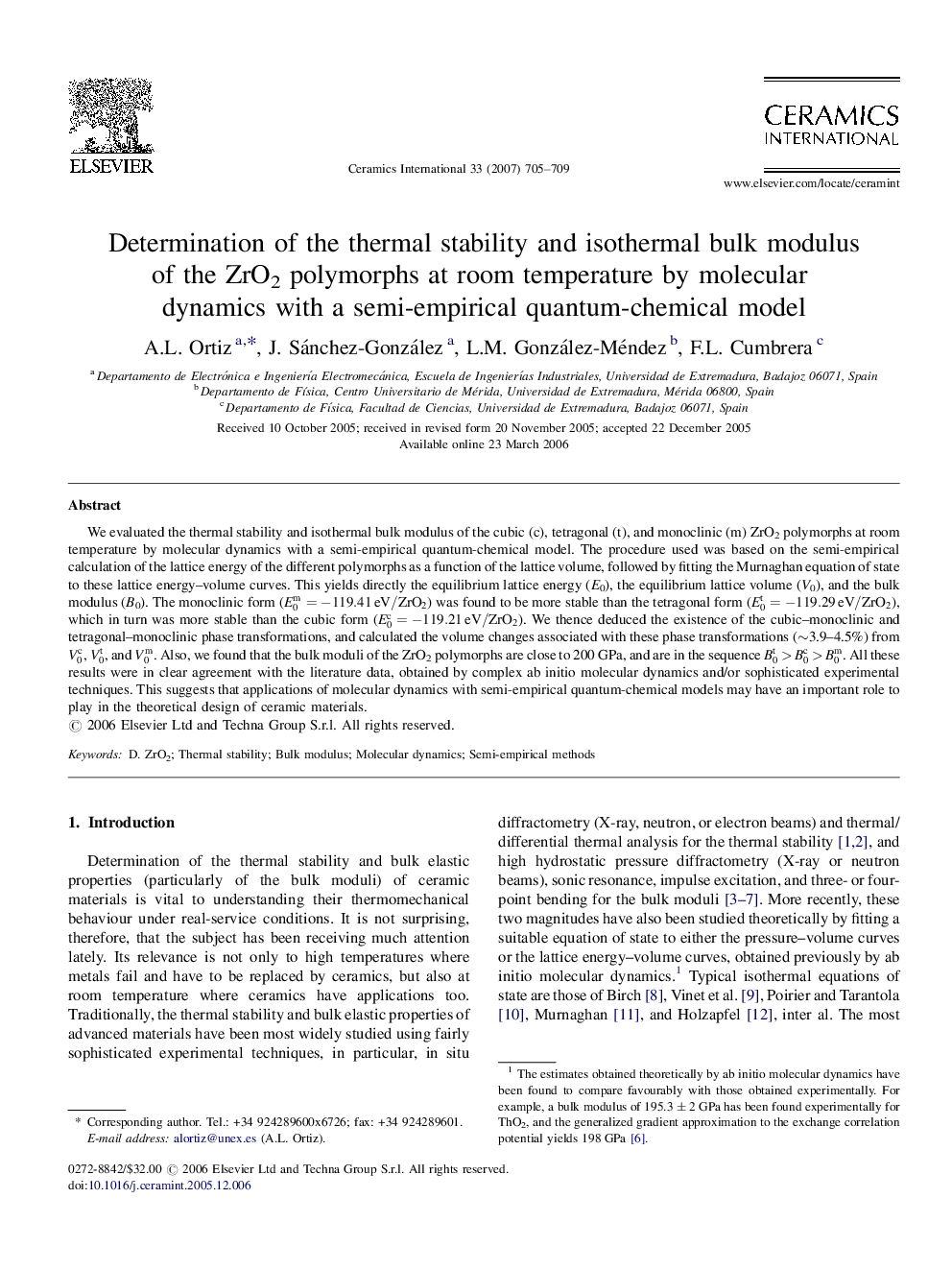| Article ID | Journal | Published Year | Pages | File Type |
|---|---|---|---|---|
| 1464782 | Ceramics International | 2007 | 5 Pages |
We evaluated the thermal stability and isothermal bulk modulus of the cubic (c), tetragonal (t), and monoclinic (m) ZrO2 polymorphs at room temperature by molecular dynamics with a semi-empirical quantum-chemical model. The procedure used was based on the semi-empirical calculation of the lattice energy of the different polymorphs as a function of the lattice volume, followed by fitting the Murnaghan equation of state to these lattice energy–volume curves. This yields directly the equilibrium lattice energy (E0), the equilibrium lattice volume (V0), and the bulk modulus (B0). The monoclinic form (E0m=−119.41 eV/ZrO2) was found to be more stable than the tetragonal form (E0t=−119.29 eV/ZrO2), which in turn was more stable than the cubic form (E0c=−119.21 eV/ZrO2). We thence deduced the existence of the cubic–monoclinic and tetragonal–monoclinic phase transformations, and calculated the volume changes associated with these phase transformations (∼3.9–4.5%) from V0c, V0t, and V0m. Also, we found that the bulk moduli of the ZrO2 polymorphs are close to 200 GPa, and are in the sequence B0t>B0c>B0m. All these results were in clear agreement with the literature data, obtained by complex ab initio molecular dynamics and/or sophisticated experimental techniques. This suggests that applications of molecular dynamics with semi-empirical quantum-chemical models may have an important role to play in the theoretical design of ceramic materials.
